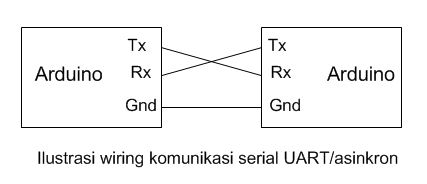Komunikasi Serial Arduino Mega 2560
In this project, we will be making a communication between Arduino and Raspberry Pi which transfer vital information by sending data one bit at a time. Serial communications are essential for every Micro-controllers to communicate between Micro-controllers and another device. The Micro-controller sends these 1 and 0 (bits) that contain necessary information one by one, or Serially. These bits form together and turn into bytes (composed of 8 bits). Brother Boutique 751 Manual Treadmill here. For further information, check it out.
It’s a fairly easy project and can be used either on its own or part of something bigger (Check it Out >>Integrated Weather Station). Step 1: List of Material.
Dec 30, 2008. Sometimes, one serial port just isn't enough! When trying to communicate with multiple serial enabled devices, while also sending info back to the main serial window, a few extra RX/TX ports can be a welcomed thing. Gpac Software Package Downloader. This example makes use of one of Arduino and Genuino Mega's 3.
I appreciate that you put this Instructable together, but I could suggest a few improvements: 1. A link to an example USB cable product would be helpful. Is it some kind of special cross-over cable? I'm not sure what this means: 'the result should be content ' /dev/ttyACM0' and you are good to go.'


Your explanation of serial communication is perhaps a bit over simplified. Do I need to send any initializing sequence or anything?
Some Arduino clones have a micro USB cable connector that they also use for power. Can you still use a USB-to-USB connection? How is the Arduino powered then? If you haven't found the answers or if someone else stumbles upon this: 1) No, any ol' USB cable will work 2) That means that if the Arduino is the first Serial connection the Pi OS 'sees' that should be the name.if not you'll have to find what the filename of the connection is (everything in Linux is a file, even the keyboard and wifi card! If you know what to look for you can have some fun with this) 3) Serial is an extremely simple protocol, there is some magic that happens when doing Serial over USB but the FDI drivers will handle that. Once you get a hold of it in this method you can act just like you are reading and writing with user input.
Reading up on Serial isn't a terrible idea for general knowledge, one hint that might save you some heartache: Serial uses 8 bits to represent characters, so it is NOT exactly ASCII or UTF-8. This can cause some annoying issues, it was my biggest pain point in my first Serial project. 4) The Vin pin and Gnd pin (I use the nearest to Vin, not sure if it matters) can be used to power any Arduino. Some also have other power inputs, but just know by connecting it directly you are taking responsibility for the quality of the power, it won't be converted or protected by the board. Make sure you use the right voltage (5V or 3.3V)! Happy hacking!